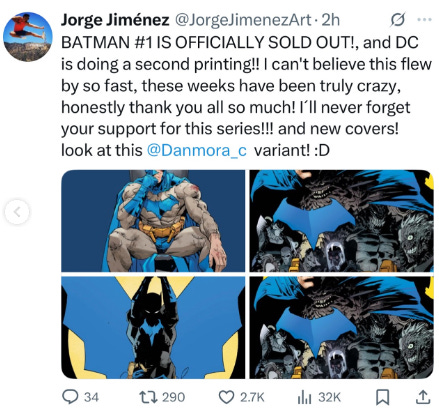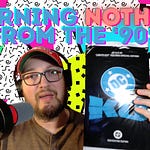Welcome Back
My name is Adriano. If you don’t know me, I’m a comic book writer, publisher, Crowdfunder, short story anthology editor and an author of novels and novellas you can find on Kickstarter and Backerkit next year.
We just had our biggest success to date with our sequel to Naked Kaiju Woman 2 which reached over 730 backers - and counting thanks to late pledges.
With such a big campaign, that will be shipping to over 17 different countries. That will include 970 different comics.
Today, I’m going to throw even more numbers at you - and for paid Substack subscribers, I’ll be going in detail with how much my print runs have cost me.
Before I do, I want to tell you about my next project - Big Smoke Pulp Vol. 2
It’s in prelaunch on Kickstarter right now. You can follow that along with other projects like Switch/Restart and Backlot Babylon, both launching in 2026.
Plus if you haven’t subscribed to the YouTube channel, @pestocomics, or the Substack, it’s the best way to stay on top of everything were putting out there - plus I share a lot of the behind the scenes of all of it.
Let’s get into it.
Comparing Prices
The first three comics I printed, I used Mixam. They’re a great printer, with great quality, but they can be a little more expensive.
What is invaluable is their website. From there, you can generate quotes and get a good sense of where the thresholds are for printing.
Check it out yourself at mixam.com
If you’d like to have me walk you through the tool, check out the video around
Whether you do or not, the main point is a lower per-unit price doesn’t mean more profit for indie creators.
Breaking Even isn’t a Guarantee.
If you’re not careful, overprinting in hopes of bringing costs down can actually push you over the edge into a loss.
Use this formula:
Total Cost / Profit per Book
(Cover Price vs Production Cost
= Copies Sold Needed to Break Even
This obviously doesn’t include production, shipping and advertising (where most of your money is going to go.)
My Recommendation
Start small. Run your Kickstarter campaign. Add 10-15% of whatever was ordered. If you need more, you can always print more.
Yes, you’re not maximizing profits. This is a more conservative approach, but it also spares you from having to look at stacks of unsold books.
It also gives you an opportunity to fix nagging issues you’ll find it your books.
You always will.
I send my comics as close to perfect as I can - but they’re never actually perfect. I always find something I wish I had done differently after printing. If you aren’t saddled with 100s of extra copies of your book, you still have that chance with a second printing.
If it’s good enough for DC and Marvel, it’s good enough for the indies.
Plus, if you ever plan on collecting books into a trade - good luck moving the floppies after that.
More Behind the Paywall
Now, if you want to see the specifics of the mistakes I’ve made with my print runs, join the paid tier. You could even use a free trial.
Not only will you unlock this post, but a number of others that include deep dives into past campaigns where I share to-the-dollar breakdowns for every campaign and more.
If not, we’ll be back on Wednesday as we talk about a return to 90s style marketing tactics like blind bags, variant covers and more.
Listen to this episode with a 7-day free trial
Subscribe to Pesto Comics to listen to this post and get 7 days of free access to the full post archives.











